|
Early Renaissance music (1400 – 1467) gradually dropped the late
Medieval period's complex devices of
isorhythm and extreme
syncopation,
resulting in a more flowing style. What the music "lost" in rhythmic
complexity, it gained in rhythmic vitality, as a "drive to the cadence"
became a prominent feature around mid-century.
In the early 1470s, music starts to be printed
using a printing press. Music printing had a major effect on how music
spread for not only did a printed piece of music reach a larger audience
than any manuscript ever could, it did it far cheaper as well. Also
during this century, a tradition of famous makers began for many
instruments. These makers were masters of their craft. An example is
Neuschel for his trumpets. Towards the end of the 15th century,
polyphonic sacred music had once again become more complex, in a
manner that can perhaps be seen as correlating to the stunning detail in
the painting at the time.
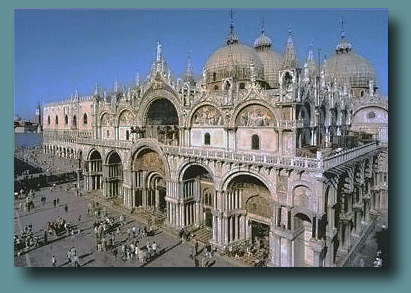
In Venice, from about 1534 until around 1600,
an impressive poly-choral style developed, which gave Europe some of the
grandest, most sonorous music composed up until that time, with multiple
choirs of singers, brass and strings in different spatial locations in
the
Basilica San Marco di Venezia
(St. Mark's Basilica). These multiple
revolutions spread over Europe in the next several decades, beginning in
Germany and then moving to Spain, France and England somewhat later,
marking the beginning of what we now know as the
Baroque musical
era.
The Roman School was a group of composers of
predominantly church music in Rome, spanning the late Renaissance and
early Baroque eras. Many of the composers had a direct connection to the
Vatican and the papal chapel, though they worked at several churches;
stylistically they are often contrasted with the Venetian School of
composers, a concurrent movement which was much more progressive. By far
the most famous composer of the Roman School is
Giovanni Pierluigi da
Palestrina, whose name has been associated for four hundred years with
smooth, clear, polyphonic perfection.
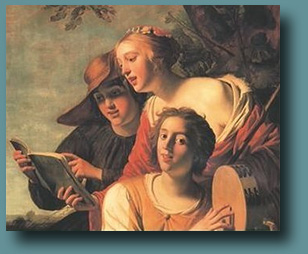 The brief but intense flowering of the musical
madrigal in England, mostly from 1588 to 1627, along with the composers
who produced them, is known as the English Madrigal School. The English
madrigals were
a cappella, predominantly light in style, and generally
began as either copies or direct translations of Italian models. Most
were for three to six voices. Musica reservata is either a style or a
performance practice in a cappella vocal music of the latter, mainly in
Italy and southern Germany, involving refinement, exclusivity, and
intense emotional expression of sung text. In addition, many composers
observed a division in their own works between a prima pratica (music in
the Renaissance polyphonic style) and a seconda pratica (music in the
new style) during the first part of the 17th century. The brief but intense flowering of the musical
madrigal in England, mostly from 1588 to 1627, along with the composers
who produced them, is known as the English Madrigal School. The English
madrigals were
a cappella, predominantly light in style, and generally
began as either copies or direct translations of Italian models. Most
were for three to six voices. Musica reservata is either a style or a
performance practice in a cappella vocal music of the latter, mainly in
Italy and southern Germany, involving refinement, exclusivity, and
intense emotional expression of sung text. In addition, many composers
observed a division in their own works between a prima pratica (music in
the Renaissance polyphonic style) and a seconda pratica (music in the
new style) during the first part of the 17th century.
Instruments of the Renaissance
Many instruments originated during the
Renaissance; others were variations of, or improvements upon
instruments that had existed previously. Some have survived to
the
present day; others have disappeared, only to be recreated in
order to perform music of the period on authentic instruments.
As in the modern day, instruments may be classified as brass,
strings, percussion, and woodwind.
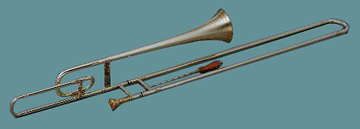 Brass instruments in the
Renaissance were traditionally played by professionals. Some of
the more common brass instruments that were played:
Slide trumpet
Cornett
Trumpet
Sackbut (Image at right) Brass instruments in the
Renaissance were traditionally played by professionals. Some of
the more common brass instruments that were played:
Slide trumpet
Cornett
Trumpet
Sackbut (Image at right)

Strings
were used in many circumstances, both sacred and secular. A few
members of this family include:
Viol
Lyre
Irish
Harp
Hurdy Gurdy
Cittern (below)
Lute
Harpsichord
Virginal (at right)
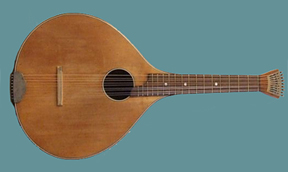 
Percussion Some Renaissance
percussion instruments include the triangle, the Jew's harp, the
tambourine, the bells, the rumble-pot, and various kinds of
drums.
Tambourine
Jew's harp (image at right)
Woodwinds (Aerophones) The woodwind
instruments (Aerophones) use a column of air vibrating within a
pipe that has little holes along it to generate vibration with
the airflow through the pipe and control the length of the sound
waves produced by the vibrating air. A player could create this
air column by using a few different

methods. The first is
blowing across a mouth hole (as would be done with flutes). The
second is blowing into a mouthpiece with a single reed (as would
be found with the clarinet or saxophone) or a double reed (which
is used with oboes and bassoons).
The woodwind instruments of the Middle
Ages are not the same as modern day woodwinds. They were more
eccentric and exotic. For example, you would find that modern
woodwinds fit the natural position of the hand. Woodwinds in the
Renaissance used simple holes drilled in the instrument.
Reed pipe
Hornpipe
Bagpipe
Panpipe
Transverse flute
Recorder
Shawm (Image
at right)
Information for this
page comes from Wikipedia |
 Brass instruments in the
Renaissance were traditionally played by professionals. Some of
the more common brass instruments that were played:
Slide trumpet
Cornett
Trumpet
Sackbut (Image at right)
Brass instruments in the
Renaissance were traditionally played by professionals. Some of
the more common brass instruments that were played:
Slide trumpet
Cornett
Trumpet
Sackbut (Image at right)


![]()

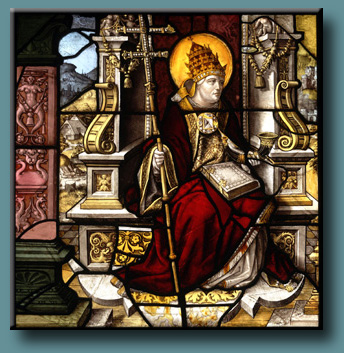

 As
a cultural movement, the Renaissance period
encompassed a rebellion of classical-based learning, the
development of linear perspective in painting, and gradual but widespread
educational reform. Traditionally, this intellectual transformation has
resulted in the Renaissance being viewed as a bridge between the Middle
Ages and the Modern era. Although the Renaissance saw revolutions in many
intellectual pursuits, as well as social and political upheaval, it is
perhaps best known for its artistic developments and the contributions of
such
As
a cultural movement, the Renaissance period
encompassed a rebellion of classical-based learning, the
development of linear perspective in painting, and gradual but widespread
educational reform. Traditionally, this intellectual transformation has
resulted in the Renaissance being viewed as a bridge between the Middle
Ages and the Modern era. Although the Renaissance saw revolutions in many
intellectual pursuits, as well as social and political upheaval, it is
perhaps best known for its artistic developments and the contributions of
such
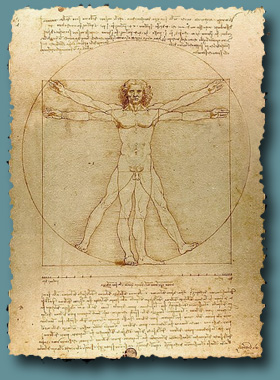
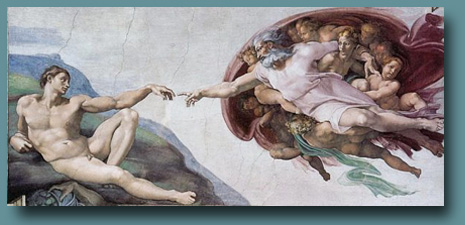
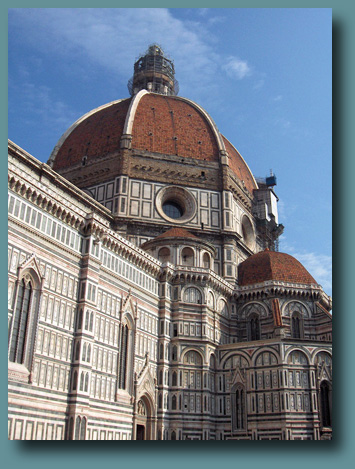
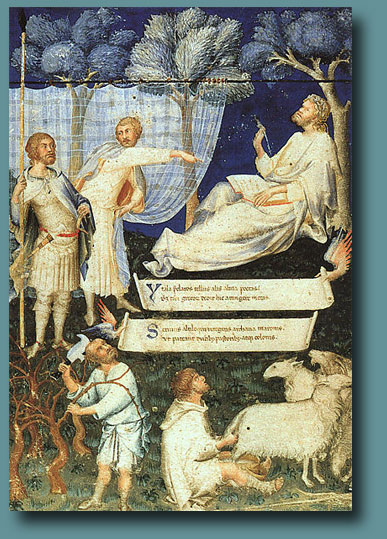
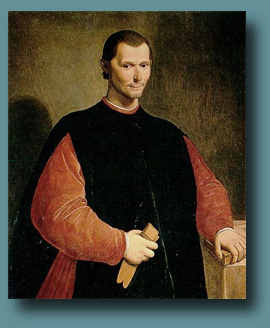
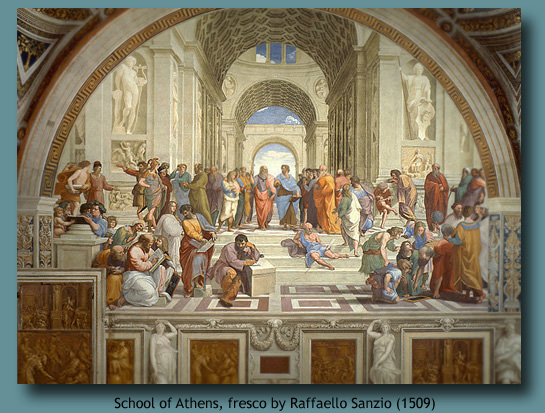

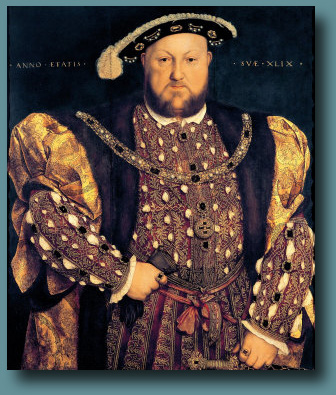



 The brief but intense flowering of the musical
The brief but intense flowering of the musical












